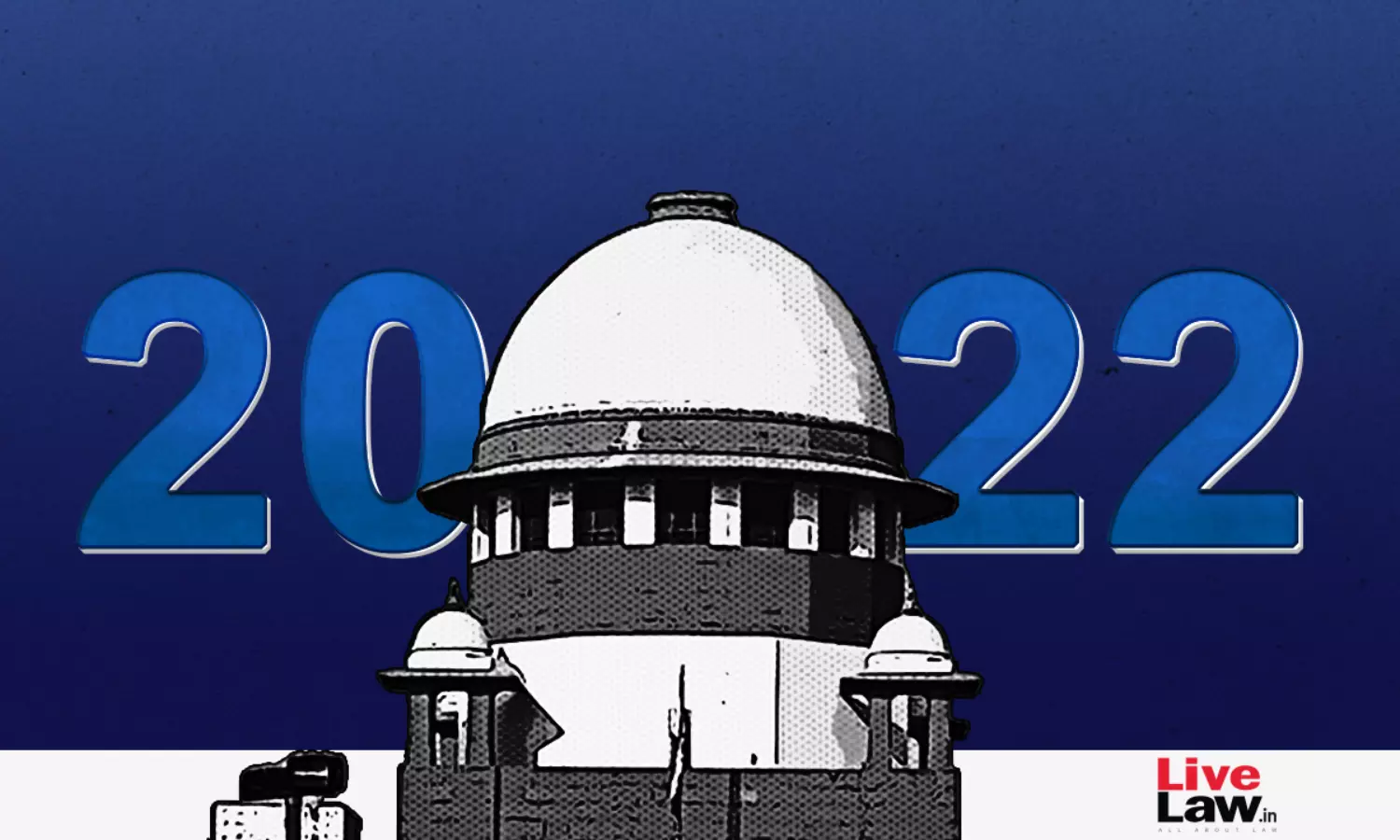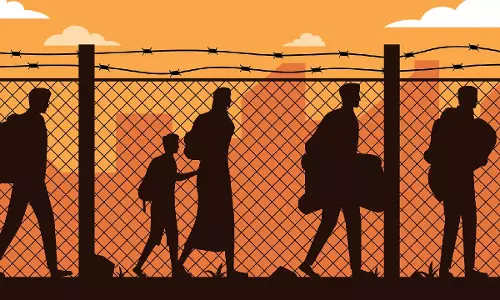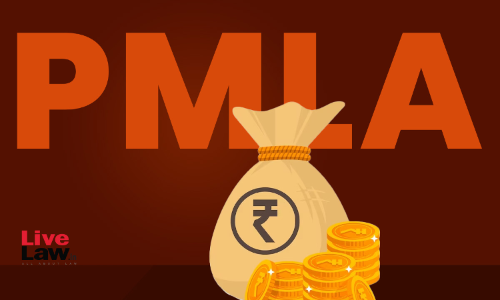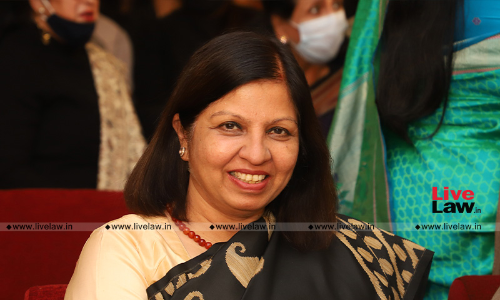
Sixty two year old Mohammad Qamir, who had been languishing in a detention centre since 2015 after being caught up in the legal cobwebs relating to citizenship, got freedom only due to an innovative and proactive intervention made by the Supreme Court. Though born in India in 1959, he had gone to Pakistan as a child along with his mother in 1967 to meet his relatives. He later returned to...
Sixty two year old Mohammad Qamir, who had been languishing in a detention centre since 2015 after being caught up in the legal cobwebs relating to citizenship, got freedom only due to an innovative and proactive intervention made by the Supreme Court. Though born in India in 1959, he had gone to Pakistan as a child along with his mother in 1967 to meet his relatives. He later returned to India in his late twenties. As an adult, he married and settled in India. Several years later, in 2011, he was arrested under the Foreigners Act, as he had no valid documents to authenticate his Indian citizenship. Though in 2015 he served out the 3 years imprisonment imposed under the Foreigners Act, freedom remained elusive for him as he was detained in a foreigners detention centre. Since Pakistan refused to accept him as a citizen, he remained in the detention centre with no certainty about release. In this backdrop, his children- who are Indian citizens- filed a habeas corpus petition in the High Court. After the Delhi High Court refused to intervene, they knocked on the doors of the Supreme Court.
The Supreme Court was quick to discern the Kafkaesque absurdity of the situation. A man, who had a settled life in India for decades, is forced to spend his old age in the detention centre, even after serving the sentence imposed on him, due to technicalities of the citizenship law. How can a person be detained indefinitely, asked a bench headed by Justice DY Chandrachud. The bench ultimately ordered his release, after ascertaining from the MHA that the man posed no security risk and asked the Centre to consider granting him a long term visa. This was one of the several instances of 2022 where the Supreme Court came to the rescue of ordinary persons who fell victims to harsh, mindless or bizarre applications of law.
Upholding personal liberty
In the case Bhola Kumar vs State of Chattisgarh, the Supreme Court awarded Rs 7.5 lakhs compensation to a convict who was detained in prison for three additional years beyond his sentence. In BA Umesh vs State of Karnataka- a shocking case of a death row prisoner being kept in illegal solitary confinement for over 10 years- the Court commuted his death penalty, taking note of the harsh cruelty meted out to him. In Iqram vs State of UP, the Supreme Court was shocked to see a strange application of law by the authorities which resulted in a person being condemned to 18 years imprisonment for electricity theft in nine cases. The Court was further startled to note that the High Court too refused to accept the convict’s plea for making the sentences run concurrently, instead of consecutively. “No case is too small for the Supreme Court”, said Chief Justice of India DY Chandrachud while hearing the case. In the order granting the man relief, the CJI’s bench affirmed that it is the duty of the Court to protect personal liberty. Even though the cases are “seemingly small and routine”, when a person’s liberty is in question, they assume constitutional importance, the Court made it clear. These cases become important not because of the petitioners- they are ordinary individuals who got caught on the wrong side of the law- but because of the reassuring message sent by the Court that it will not hesitate to intervene if personal liberty is curtailed in an unconstitutional manner, regardless of who the victim is.
Zakia Jafri case : Targeting those who question the State
At the same time, there are other instances from the year where one saw the Supreme Court failing in its constitutional role as a protector of citizens’ fundamental rights. The most shocking case would be Zakia Jafri vs State of Gujarat, where the Court, while dismissing a plea seeking probe into alleged larger conspiracy by high state functionaries during the 2002 Gujarat riots, called for the arrest of persons who questioned SIT findings. It was not a case of the Court simply failing to protect personal liberty but an instance of it acting with extreme hostility towards activists who questioned the State and preparing the groundwork for a witch hunt against them. The saving grace is that a few months later, another bench granted interim bail to activist Teesta Setalvad, who was arrested by the Gujarat police based on the observations in the Zakia Jafri case. Similar to the approach in Zakia Jafri case, in Himanshu Kumar vs Union of India, the Court imposed 5 lakh cost on the petitioner who sought independent probe into alleged extra-judicial killings of tribals in Chattisgarh and allowed criminal proceedings against him for alleged fabrication of evidence.
Draconian provisions of PMLA upheld
The judgment in Vijay Madanlal Choudhary vs Union of India is yet another disappointing instance as the Court upheld the sweeping powers of ED for arrest and seizure and the stringent conditions for bail. The judgment adopts a technical and textual approach to hold that the ED officials are not "police officers" and that the statements recorded by them are not hit by Article 20(3) or Article 21, ignoring the ambit of coercive powers possessed by the agency in reality. The judgment assumed a different contextual relevance too as it came amidst the widespread criticism regarding the use of ED by the government as a political tool to target opposition parties. However, there are reasons to remain hopeful as another bench subsequently agreed to consider a petition seeking to review the judgment. It is also notable that in a subsequent judgment Union of India vs Ganpati Dealcom Pvt. Ltd, the Court expressed a concern that the PMLA provisions allowing the ED to take possession of the property before trial - which were upheld in Vijay Madanlal Choudhary- can lead to arbitrariness.
Bail principles reiterated, directions issued to avoid unnecessary arrest
The judgment in Satinder Kumar Antil vs CBI, although reiterating the age old principle of “bail is the rule and jail is the exception”, is a landmark one as it came as a much needed reminder to police and judges during the present times where there is an increased targeting of persons voicing dissent.
The Court issued several directions and guidelines to avoid unnecessary arrest and undertrial detention. The Court also recommended that a “Bail Act” be enacted so as to streamline and expedite the process of grant of bail and .
Protecting right to dissent : Activists and journalists granted liberty
It is also gladdening to note that the Court did not yield to the vehement opposition made by the State agencies against the grant of bail to persons like Mohammed Zubair, Siddique Kappan and Teesta Setalvad who were targeted for raising questions at the establishment. In the Zubair case, condemning the use of arrest as a punitive tool, the Court did not mince any words in stating that he was trapped in a “vicious cycle of criminal law”. While hearing Siddique Kappan’s bail plea in the Hathras conspiracy case, the Court asked what was the crime in launching a campaign seeking justice for a victim. In the Teesta Setalvad case as well, the police case was put to intense scrutiny by the bench. The fact that the State was pursuing these cases with increased zeal did not deter the Court from raising relevant questions. This was in marked departure from the Supreme Court of the previous years where it used to accept the State’s version at the face value in politically sensitive issues without any probing.
The year also witnessed activists like Varavara Rao, Gautam Navlakha and Anand Teltumbde, who are undertrial prisoners in the Bhima Koregaon case, getting relief from the Supreme Court. The Court allowed bail to Varavara Rao and house arrest facility to Gautam Navlakha on health grounds and did not interfere with the bail granted on merits by the Bombay High Court to Anand Teltubmde.
The blot of a Saturday hearing
The Saturday hearing given for the appeal against the discharge of Professor GN Saibaba and five others did raise several eyebrows(more on this can be read here). Also, the cursory manner in which Bilkis Bano’s review petition was dismissed, ignoring the plain language of the statute and binding precedents, is also a low point for the Supreme Court in 2022(more on this issue can be read here).
Allowing past wounds to fester - Approach in the Gyanvapi case
The Supreme Court’s approach regarding the Gyanvapi mosque issue is also a let down when analyzed from the perspective of the objectives of the Places of Worship(Special Provisions) Act 1991. While the Court’s approach of leaving the matter of maintainability to be decided by the trial court first might be an appropriate one in an ordinary civil suit, the present case called for a more proactive approach with foresight, given the wide range social, communal and political implications of allowing the issue to remain pending. The Supreme Court had an opportunity to put the issue at rest, which it squandered. The oral remarks made by the bench during the hearing that the Places of Worship Act does not bar suits seeking to ascertain the religious nature of a structure were not only uncalled for but also contrary to the letter and spirit of the 1991 Act. One can only hope that in future, this does not become a moment of regret, as it happened in the Babri Masjid demolition case, where the Court allowed the sparks to fly by failing to make a timely intervention.
Upholding the rights of women
The year also witnessed the Supreme Court delivering landmark judgments on the rights of women - the most notable one being the affirmation of the right of an unmarried woman to seek abortion. While reiterating the ban on the “two-finger test”, the Court condemned the adoption of patriarchal and misogynistic approaches while investigating sexual crimes against women. There are also notable observations made by the Supreme Court regarding the need to recognize the legal rights of LGBT relationships.
Judicial appointments- Judiciary asserting itself
With respect to the issue of judicial appointments, one saw the Supreme Court adopting an assertive stance by criticising the Union Government in the strongest terms for delaying the notifications of the names reiterated by the collegium. The Court also condemned the practice of Centre selectively keeping certain names pending by splitting up collegium resolutions. These developments on the judicial side happened in the face of an aggressive attack launched on the collegium system by the executive functionaries like the the Vice President and Law Minister. Stating clearly that it does not appreciate the comments made by the Government functionaries, the Court asserted that the collegium system is the law of the land, until it is replaced with any other system, and hence the same has to be followed to the hilt. The building up of tension between between the Union Government and the Supreme Court over this issue resulted in reigniting the debate on collegium system in the public domain.
Administrative reforms
In 2022- which saw the Supreme Court having three Chief Justices (Justices NV Ramana, UU Lalit and DY Chandrachud), there were several positive changes on the administrative side as well. Six Constitution Benches were formed to decide long pending references. At one particular time, there were three CBs sitting simultaneously, the highest ever in recent times. Many long forgotten cases got resurrected from the limbo, including the 2016 challenge against the demonetisation. However, issues like electoral bonds, legality of abrogation of J&K special status, money bill etc., await adjudication. The contentious issue of EWS reservation got settled by the Constitution Bench, with the 103rd amendment being upheld by a thin majority of 3:2. The judgments in the EWS case are highly debatable and the issue might see further developments with review petitions being filed against it.
Overall, one saw a two-faced approach by the Supreme Court. At times progressive and bold, and at times allowing the executive excesses to pass unquestioned. While analysing this pattern of highs and lows, one should also bear in mind the “polyvocal” nature of the Supreme Court - as it is an unfortunate yet undeniable truth that the composition of the bench influences the course and fate of a case to a large extent.





